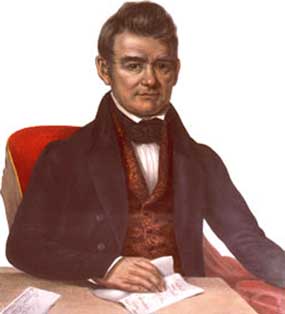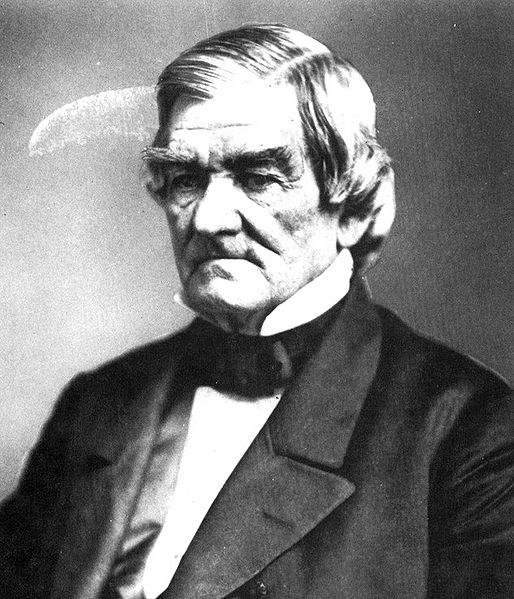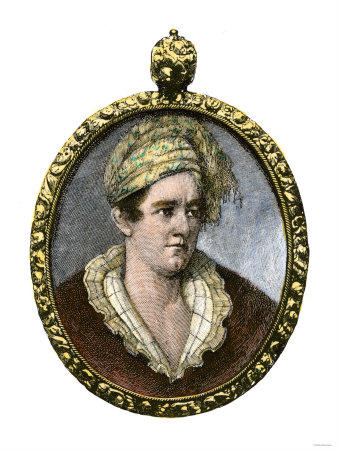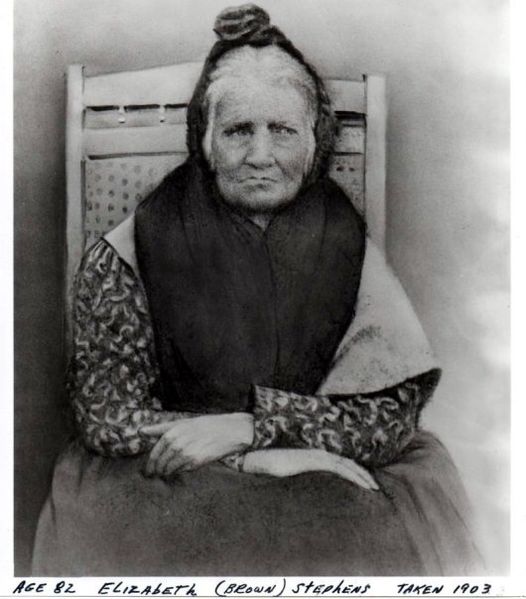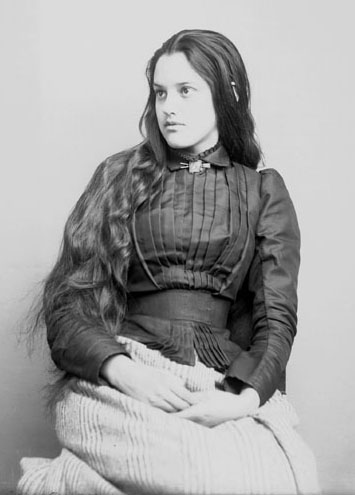 |
Craig White's Literature Courses Historical Backgrounds the Trail of Tears Cherokee: Nunna daul tsunyi ("The Trail Where We Cried")
(forced relocation of Cherokee & other Southeast American Indians for courses in Early American Literature, American Renaissance, American Minority Literature, & American Immigrant Literature |
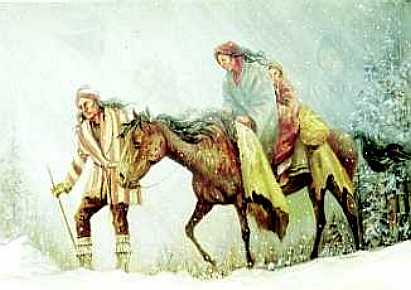 |
External sources: U.S. Dept of Interior Video History of Cherokee People
National Park Service: Trail of Tears
North Georgia Tourist Promotion on Trail of Tears
John G. Burnett, An 80-year-old Cherokee remembers the Trail of Tears
History Channel video describing Indian Removal Act
Eastern Band of Cherokee Indians
![]()
Tribes & Maps of the Trail of Tears
![]()
Tribes / Nations involved in Trail of Tears
the Five Civilized Tribes (compare / contrast Iroquois Confederacy)
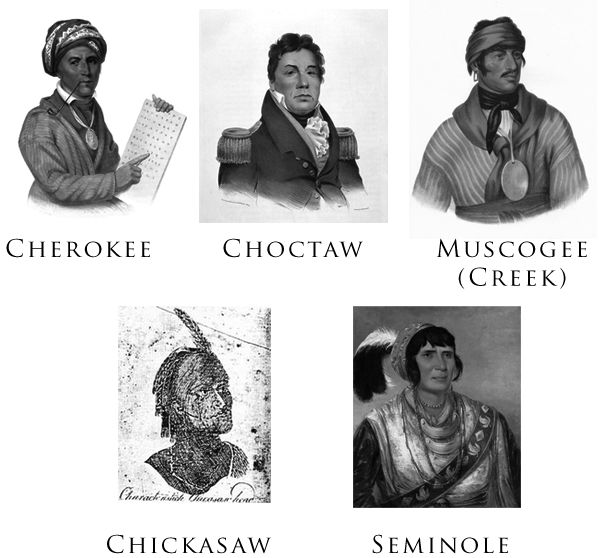
"Civilized" < adopting practices of Western Civilization promoted by George Washington and other Founders so Indians might either peacefully co-exist with or assimilate to American society:
![]() private property
(sometimes including slaves; many African American people claim African,
European, and American Indian ancestry)
private property
(sometimes including slaves; many African American people claim African,
European, and American Indian ancestry)
![]() permanent homes
(in contrast to seasonal tribal migrations)
permanent homes
(in contrast to seasonal tribal migrations)
![]() agriculture
/ farming performed by men (not by women as in many traditional Indian cultures)
agriculture
/ farming performed by men (not by women as in many traditional Indian cultures)
![]() European-style clothes
European-style clothes
![]() western-style education
incl. literacy
western-style education
incl. literacy
![]() conversion to
Christianity
conversion to
Christianity
![]() multiparty
governance, elections, representative government
multiparty
governance, elections, representative government
![]() Intermarriage between distinct
tribes (sometimes forming new tribal identities) + intermarriage with white settlers, particularly
frontier Scotch-Irish
who settled in Appalachian and Ohio Valley regions in 1700s.
Intermarriage between distinct
tribes (sometimes forming new tribal identities) + intermarriage with white settlers, particularly
frontier Scotch-Irish
who settled in Appalachian and Ohio Valley regions in 1700s.
Irony: Even after all these tribes' concessions to meet the dominant culture's demands, the Trail of Tears happened. In contrast to European immigrants' successful assimilation, these Indians tried to assimilate but were punished or robbed by the dominant culture to which they tried to assimilate.
For this and many other reasons, American Indians are thus a minority culture and not an immigrant culture. The Trail of Tears is a migrant experience, but as with African Americans' transport from Africa, it is forced rather than voluntary migration.
Discussion of the Trail of Tears often focuses on the Cherokee. Concentration of the Cherokees may follow from that tribe's focus may follow from Cherokees'
![]() Prominent legal and political battles in Washington and elsewhere centered
on Cherokees' claims versus State of Georgia.
Prominent legal and political battles in Washington and elsewhere centered
on Cherokees' claims versus State of Georgia.
![]() High
literacy rates & cross-cultural communication skills including
The
Cherokee Phoenix newspaper &
The Cherokee
Memorials.
High
literacy rates & cross-cultural communication skills including
The
Cherokee Phoenix newspaper &
The Cherokee
Memorials.
![]() Frequent intermarriage with whites
on frontier, especially Scotch-Irish.
(If white Americans claim Indian descent and you ask them which tribe,
frequently you'll hear "Cherokee.")
Frequent intermarriage with whites
on frontier, especially Scotch-Irish.
(If white Americans claim Indian descent and you ask them which tribe,
frequently you'll hear "Cherokee.")
![]()
Maps of Trail of Tears
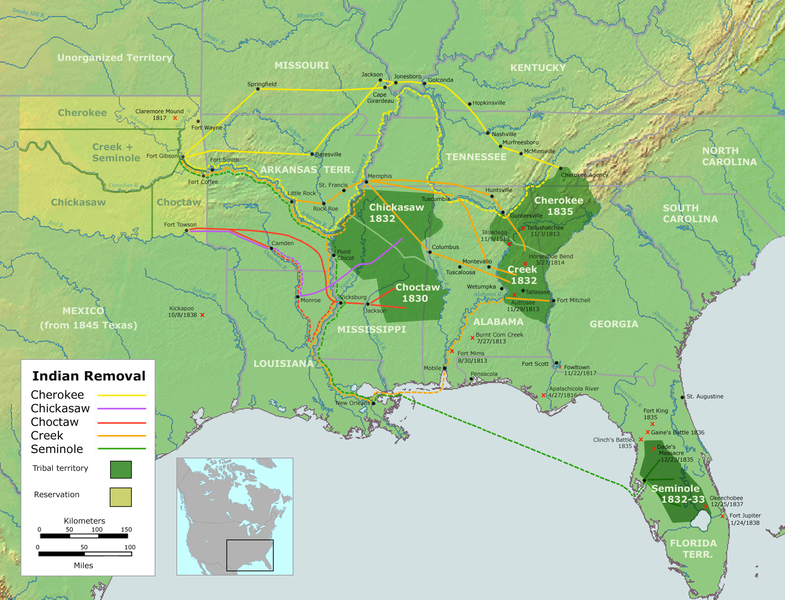
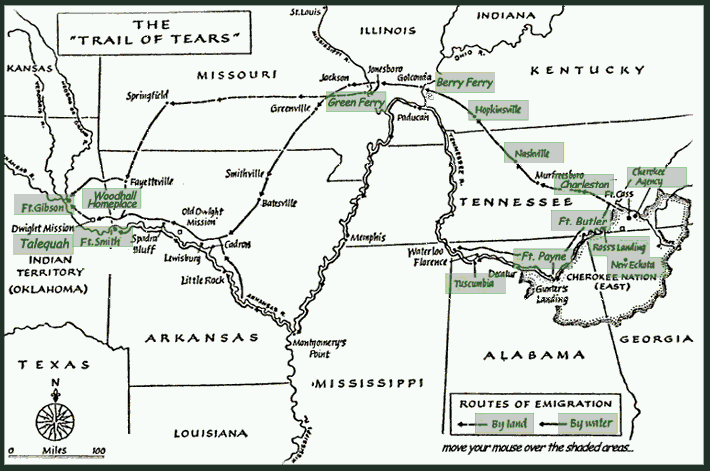
![]()
John Ross /
Guwisguwi
(1790-1866)
principal chief of Cherokee Nation (1828-1866)
sometimes called the "Moses" of his people for leading
them
from Appalachian Region
through Trail of Tears to western reservations
|
|
|
As Ross's appearance indicates,
genealogically he was 7/8 Scots and 1/8 Cherokee through his mother
(matrilineality enabling his
eligibility to serve as chief)
As with Apache Chief Quanah Parker (see
Captivity Narrative), mixed ethnic and cultural status helped
Ross negotiate between Indians and settlers.
Ross's status also raises the peculiar relations between Cherokee and other Indians, and Scotch-Irish settlers of the Appalachian and Ohio Valley regions in the 1700s and beyond.
Scotch-Irish soldiers like Andrew Jackson, who as President enabled the Trail of Tears, were renowned as Indian fighters but also intermarried with Indians.
|
Sam Houston and the Trail of Tears At the age of 16 Sam Houston (1793-1863), also of Scotch-Irish descent, lived among the Cherokee nation, who called him Colonneh or "the Raven," In his mid-30s, after the failure of his marriage in 1829, Houston resigned as governor of Tennessee and moved to Arkansas Territory to live again with Cherokee people who resettled there after being removed on the Trail of Tears. Houston-Colonneh was adopted by Cherokee Chief John Jolly. In a Cherokee ceremony, Houston married Chief Jolly's niece, Tiana Rogers, who was the daughter of Chief Jolly's sister with a Scotch-Irish trader. When Houston moved to Texas in 1832, Tiana stayed behind and later remarried, as Houston also did in 1840. |
|
![]()
Photos of Two Women associated with the Trail of Tears
|
|
Marcia Pascal, photo from 1880s
daughter born to Sarah, daughter of Cherokee Chief John Ridge, (some information was found on website titled "Babes of History") |
![]()
|
Popular Painting depicting / romanticizing Trail of Tears |
remaining section of
Trail of Tears |
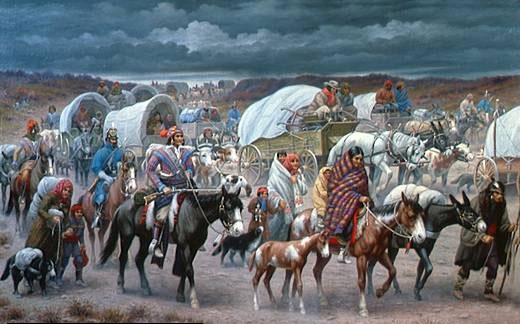 Robert Lindneux,The Trail of Tears (1942) |
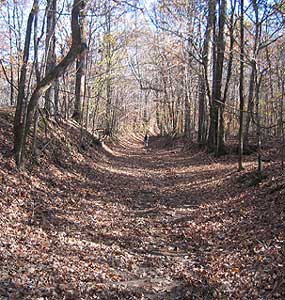 |
Compare Romantic art (left) vs. un-Romantic reality (right)
Historical facts and complications leading to the Trail of Tears:
Gold fever and land fever drove whites in Georgia to press the U.S. Government to remove the Cherokee Indians from their ancestral lands. (Cf. oil fever today opposing research and remedies for climate change.)
The Supreme Court ruled that Indians' rights to their lands in Georgia were constitutionally guaranteed, but President Andrew Jackson, renowned as an Indian fighter of Scotch-Irish descent, ignored the ruling and proceeded with Indian Removal.
How the Trail of Tears may resemble or differ from the immigrant narrative:
![]() Difference:
Forced
rather than voluntary migration
Difference:
Forced
rather than voluntary migration
![]() Possible limited resemblance: As the
"national migration" of an entire people, the Trail of Tears may resemble the
"Great Migration" of Pilgrims and Puritans from England to New England
in 1600s, the Jews' Exodus from Egypt to the Promised Land, and African Americans
"Great Migration" from the rural, segregated South to the industrial, urban
North in the early 1900s.
Possible limited resemblance: As the
"national migration" of an entire people, the Trail of Tears may resemble the
"Great Migration" of Pilgrims and Puritans from England to New England
in 1600s, the Jews' Exodus from Egypt to the Promised Land, and African Americans
"Great Migration" from the rural, segregated South to the industrial, urban
North in the early 1900s.
The Trail of Tears set the Indians involved into a separate and unequal assimilation track. As with African Americans, a distinct form of assimilation took place.
-
African America: Through experience of slave ships and color-segregation, Africans of many different tribes and languages became one people: African Americans. (Also consider later genetic assimilations from Native and White America.)
-
Native America: the Trail of Tears brought many different tribes and languages of Native America together in Oklahoma, where tribes who might have been antagonistic toward each other began to intermarry and became more or less a single people: American Indians. (This oversimplifies; many Indian tribes and nations still retain distinct identities as well as longstanding rivalries or grudges.)
In both cases, minority groups for whom assimilation was denied ended up assimilating with each other.

Andrew Jackson (1767-1845; U.S. President 1828-36)
on U.S. currency and, below, in 1845
(note resemblance to John Ross above)
Jackson is President Trump's model as a disruptor who doesn't pretend to good manners or interest in arts or finer points of law.
Jackson built his political base on "the common man" in the U.S. South in conflict with ethnic "others" (in Jackson's case, Indians and African American Slaves; in Trump's case, Mexicans and Muslims.)
After election, Trump visited Jackson's historic home in Tennessee.
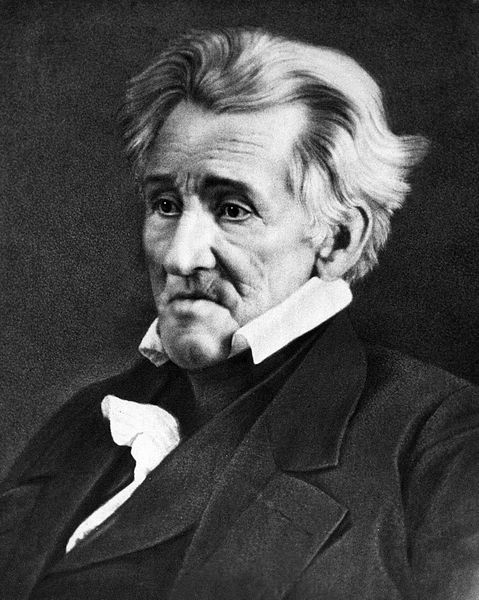
Wikipedia article on "Five Civilized Tribes"
Discussion questions on Trail of Tears and Cherokee Memorials:
1. What possible lessons from learning about Trail of Tears?
2. What frustrations?
3. Can potential racial / ethnic divisions be overcome by appeal to "rule of law?" as opposed to "rule of tribal identity?"
